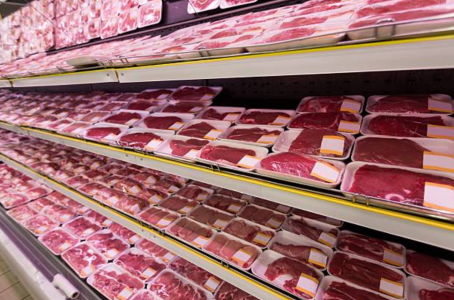More Aussies queue for grocery discounts—what it means for shoppers over 60
By
Gian T
- Replies 0
If things seem a little busier than usual at your local shops—particularly in certain sections—you’re not imagining it.
Around the country, growing numbers of people are adjusting their routines in subtle ways, looking to stretch their dollars a little further as everyday expenses keep adding up.
For some, especially those past a certain age, these small shifts can have a meaningful impact.
A Sydney local named Tina recently shared a photo with 2GB’s Ben Fordham Live that perfectly captured this new reality.
The image showed a queue of shoppers waiting patiently for the day’s discounted meat to hit the shelves.
Tina, who lives in the relatively affluent suburb of Drummoyne, said she’s seen this trend grow since the COVID-19 pandemic.
‘This afternoon, I couldn’t believe what I was seeing,’ she told Fordham.
‘I’ve seen it happen before, but there were so many more people this time. I thought, 'Is this a cost-of-living thing? Are people planning their shopping around these discounts?’
It turns out the answer is yes. And it’s not just happening in less well-off areas—Tina’s experience in Drummoyne suggests that even those in more comfortable suburbs are feeling the pinch.
The answer is simple: food prices are up, and household budgets are stretched. According to the Australian Bureau of Statistics, food prices rose 3.3 per cent in the 12 months to September 2024.
Research from Compare the Market found the average Aussie is now spending $213.64 a week on groceries—an increase of more than $21 since January.
Tina herself said her family’s grocery bill has jumped by $50 a week in the past year. ‘I can understand why people would be doing that,’ she said.
And it’s not just meat. Shoppers are also waiting for markdowns in the bakery and dairy aisles, with some snapping up multiple bottles of heavily discounted milk at a time.
What’s striking is that these queues aren’t just made up of young families or students.
As Ben Fordham pointed out, people of all ages are lining up for bargains—including plenty of over-60s.
It’s a reminder that the rising cost of living affects everyone, regardless of age or background.
Reverend Bill Crews, who runs a foundation supporting those in need, told Fordham that he’s not surprised by the trend.
‘Life’s pretty tough for a lot of people today, and it really began around COVID, and it’s been getting worse and worse since then,’ he said.
His organisation now hands out thousands of food hampers year-round, not just at Christmas.
To make the most of supermarket savings, learn when mark-downs happen, keep an eye on discount trolleys, check clearance sections, avoid overbuying, and take advantage of loyalty programs for extra deals.
For many over 60s, a fixed income means every dollar counts.
The rise in grocery prices can be especially tough for pensioners and retirees, who may not have the flexibility to increase their income.
However, the growing popularity of discount hunting also shows the resilience and resourcefulness of our community.
It’s also a reminder that you’re not alone. If you’re finding it harder to make ends meet, there’s no shame in seeking out bargains—or in asking for help.
Community organisations, food banks, and even your local council may have resources to support you.
 Have you noticed more people queuing for discounts at your local supermarket? Do you have any tips for getting the best deals on groceries? Or maybe you’ve got a story about a bargain you scored? We’d love to hear from you—share your experiences in the comments below.
Have you noticed more people queuing for discounts at your local supermarket? Do you have any tips for getting the best deals on groceries? Or maybe you’ve got a story about a bargain you scored? We’d love to hear from you—share your experiences in the comments below.
Around the country, growing numbers of people are adjusting their routines in subtle ways, looking to stretch their dollars a little further as everyday expenses keep adding up.
For some, especially those past a certain age, these small shifts can have a meaningful impact.
A Sydney local named Tina recently shared a photo with 2GB’s Ben Fordham Live that perfectly captured this new reality.
The image showed a queue of shoppers waiting patiently for the day’s discounted meat to hit the shelves.
Tina, who lives in the relatively affluent suburb of Drummoyne, said she’s seen this trend grow since the COVID-19 pandemic.
‘This afternoon, I couldn’t believe what I was seeing,’ she told Fordham.
‘I’ve seen it happen before, but there were so many more people this time. I thought, 'Is this a cost-of-living thing? Are people planning their shopping around these discounts?’
It turns out the answer is yes. And it’s not just happening in less well-off areas—Tina’s experience in Drummoyne suggests that even those in more comfortable suburbs are feeling the pinch.
The answer is simple: food prices are up, and household budgets are stretched. According to the Australian Bureau of Statistics, food prices rose 3.3 per cent in the 12 months to September 2024.
Research from Compare the Market found the average Aussie is now spending $213.64 a week on groceries—an increase of more than $21 since January.
Tina herself said her family’s grocery bill has jumped by $50 a week in the past year. ‘I can understand why people would be doing that,’ she said.
And it’s not just meat. Shoppers are also waiting for markdowns in the bakery and dairy aisles, with some snapping up multiple bottles of heavily discounted milk at a time.
What’s striking is that these queues aren’t just made up of young families or students.
As Ben Fordham pointed out, people of all ages are lining up for bargains—including plenty of over-60s.
It’s a reminder that the rising cost of living affects everyone, regardless of age or background.
Reverend Bill Crews, who runs a foundation supporting those in need, told Fordham that he’s not surprised by the trend.
‘Life’s pretty tough for a lot of people today, and it really began around COVID, and it’s been getting worse and worse since then,’ he said.
His organisation now hands out thousands of food hampers year-round, not just at Christmas.
To make the most of supermarket savings, learn when mark-downs happen, keep an eye on discount trolleys, check clearance sections, avoid overbuying, and take advantage of loyalty programs for extra deals.
For many over 60s, a fixed income means every dollar counts.
The rise in grocery prices can be especially tough for pensioners and retirees, who may not have the flexibility to increase their income.
However, the growing popularity of discount hunting also shows the resilience and resourcefulness of our community.
It’s also a reminder that you’re not alone. If you’re finding it harder to make ends meet, there’s no shame in seeking out bargains—or in asking for help.
Community organisations, food banks, and even your local council may have resources to support you.
Key Takeaways
- A photograph taken in a Drummoyne supermarket shows a long queue of shoppers waiting for discounted meat, reflecting 'signs of the times'.
- Many shoppers now follow supermarket employees as they restock discounted items, hoping to snag bargains due to rising costs.
- Food prices have increased sharply, with the average Aussie weekly grocery bill up by over 11 per cent since January 2024, and even people in affluent areas are feeling the impact.
- Community organisations, like the Reverend Bill Crews Foundation, report an increasing need for food aid, with the ongoing demand for hampers extending well beyond Christmas, highlighting the growing cost of living pressures.








